Last updated on 2025-11-11
“I sense the presence of snakes and paint in this ancient building.”
My impressions after viewing Anselm Kiefer’s “SOLARIS,” which is being held at the Daidokoro/Okiyodokoro of the Ninomaru Palace at Nijo Castle, a former villa in Kyoto.
Table of contents
- Please see the disclaimer regarding advertising here.
- Italicized links in the text are advertisement links that take you to other sites.
Anselm Kiefer 「SOLARIS」
Overview
- Exhibition title: Anselm Kiefer “SOLARIS”
- Dates: Monday, March 31, 2025 – Sunday, June 22, 2025
- Location: Former Imperial Villa Nijo Castle Ninomaru Palace Kitchen and Okiyodokoro
The exhibition is divided into five chapters, with a total of 33 works on display.
- I. The Artist’s Aspirations and Responsibilities
- II. Modern Physics and Pilgrimage Buddhism
- III. Vanishing with an empty name
- IV. Edo and the Age of Time
- V. Arthur Rimbaud and Henry Morgenthau’s Wilderness
To see the Kiefer exhibition, you need two tickets: a ticket for the Kiefer exhibition and an admission ticket to Nijo Castle.
We recommend purchasing the tickets in advance online, especially since there is a long line of people seeking tickets at the Nijo Castle ticket counter starting from 9am. We recommend purchasing your tickets through ASOVIEW, which is affiliated with Nijo Castle.
The types of tickets available at Nijo Castle are listed below, but if you are only going to see the Kiefer exhibition, you will only need an admission ticket.
Tickets for Nijo Castle are divided into separate tickets for each facility, and you will need an admission ticket to enter the castle itself, a ticket to view Ninomaru Palace, a facility within the castle, and a ticket to view Honmaru Palace, another facility within the castle, each of which requires an admission fee.
Tickets for the Kiefer exhibition can be purchased from the official website.
As you will be going into the kitchen to view the artworks, it is mandatory to wear socks.
There are generally no restrictions on bringing luggage into the venue, but backpacks must be carried on the front of your head to protect the cultural assets and artworks.
There are no lockers or restrooms inside the venue after passing through the ticket gate, so if you have luggage, it is recommended that you leave it in a locker at Nijo Castle and use the restroom outside the venue before entering. Re-entry is not permitted, so if you are staying for a long time, it is a good idea to have a meal before entering.
A list of artworks can be downloaded in PDF from the dedicated website using the QR code at the venue.
Photography of the entire museum and the artworks is permitted.
Review
- I. The Artist’s Aspirations and Responsibilities
- II. Modern Physics and Pilgrimage Buddhism
- III. Vanishing with an empty name
- IV. Edo and the Age of Time
- V. Arthur Rimbaud and Henry Morgenthau’s Wilderness
I. The Artist’s Aspirations and Responsibilities
This work can be seen while waiting for the exhibition entrance to open. As you walk towards the kitchen of the exhibition hall, you can get a good sense of the enormity of Ra and the power of its wings. When you look at the object, the wings that grow from the palette spread into the sky, and a snake approaches from underneath.
Does the approaching snake represent a threat to the artist’s freedom of activity? Or is the snake simply a symbol of the Year of the Snake?
This gigantic object stimulates the imagination of the viewer.
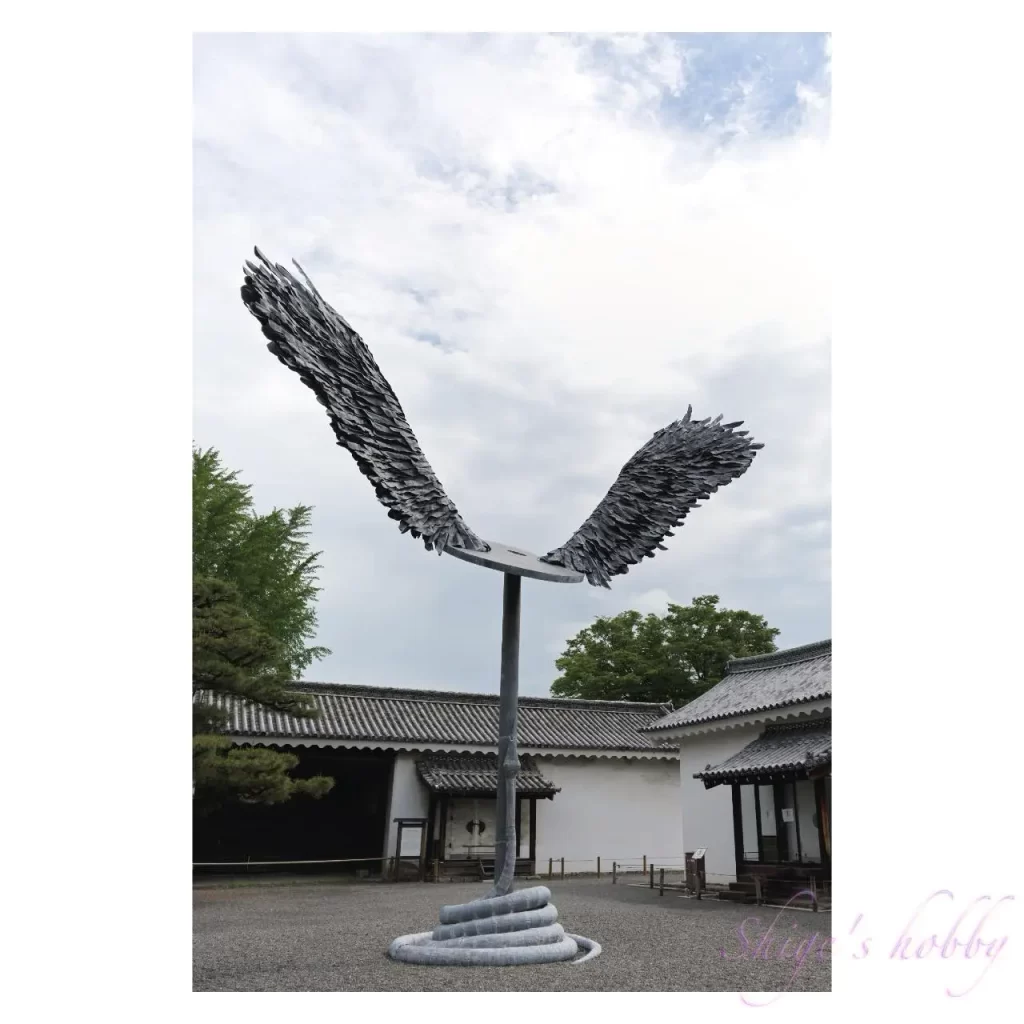
II. Modern Physics and Pilgrimage Buddhism
Three female statues, known as “Ancient Women,” are in the kitchen, which has always been women’s territory. A masculine painting decorated with gold leaf is displayed looking at them, creating an intriguing contrast.
Looking up, you can see magnificent beams. There are few pillars inside the kitchen, and the huge space is supported by pillars and beams embedded in the exterior wall.
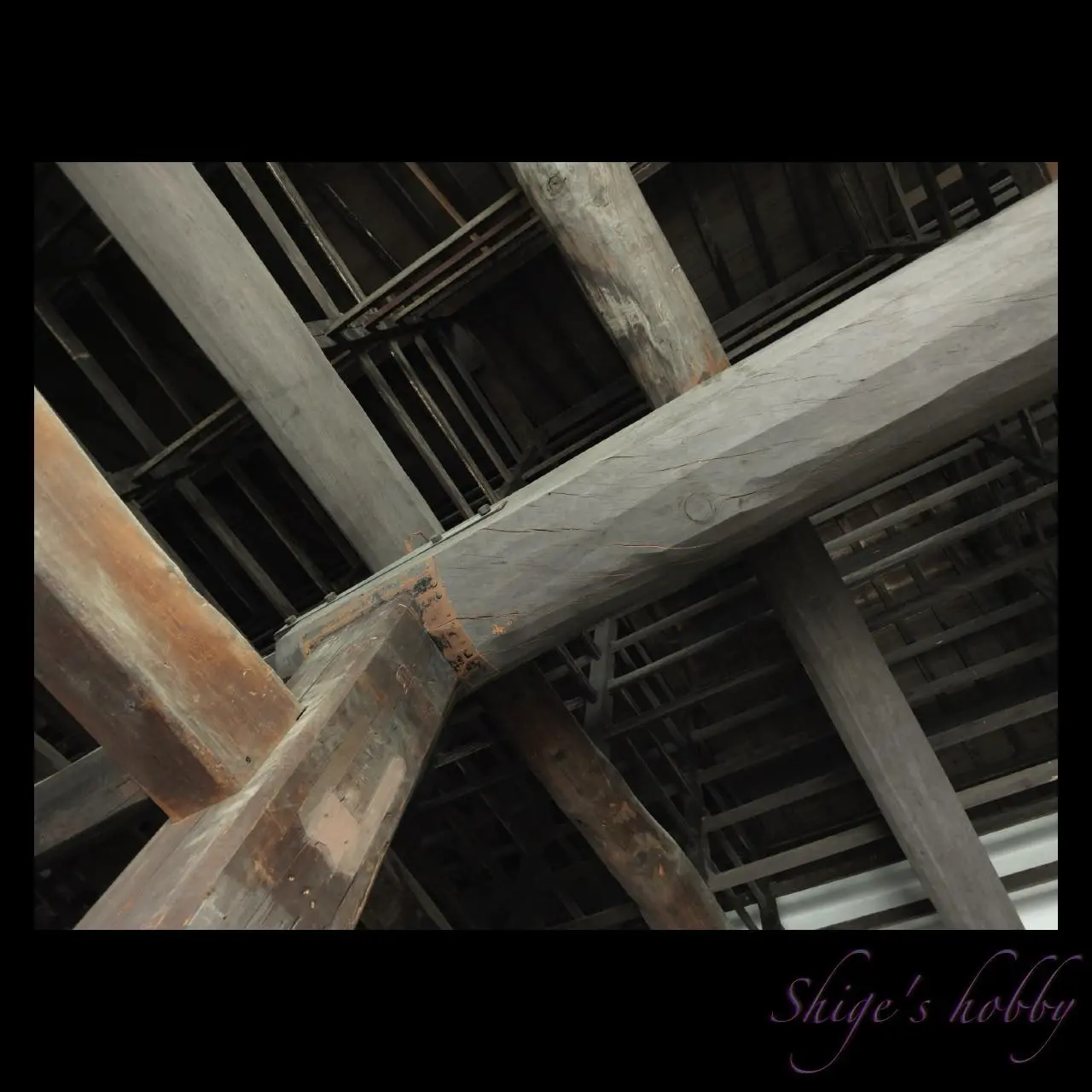
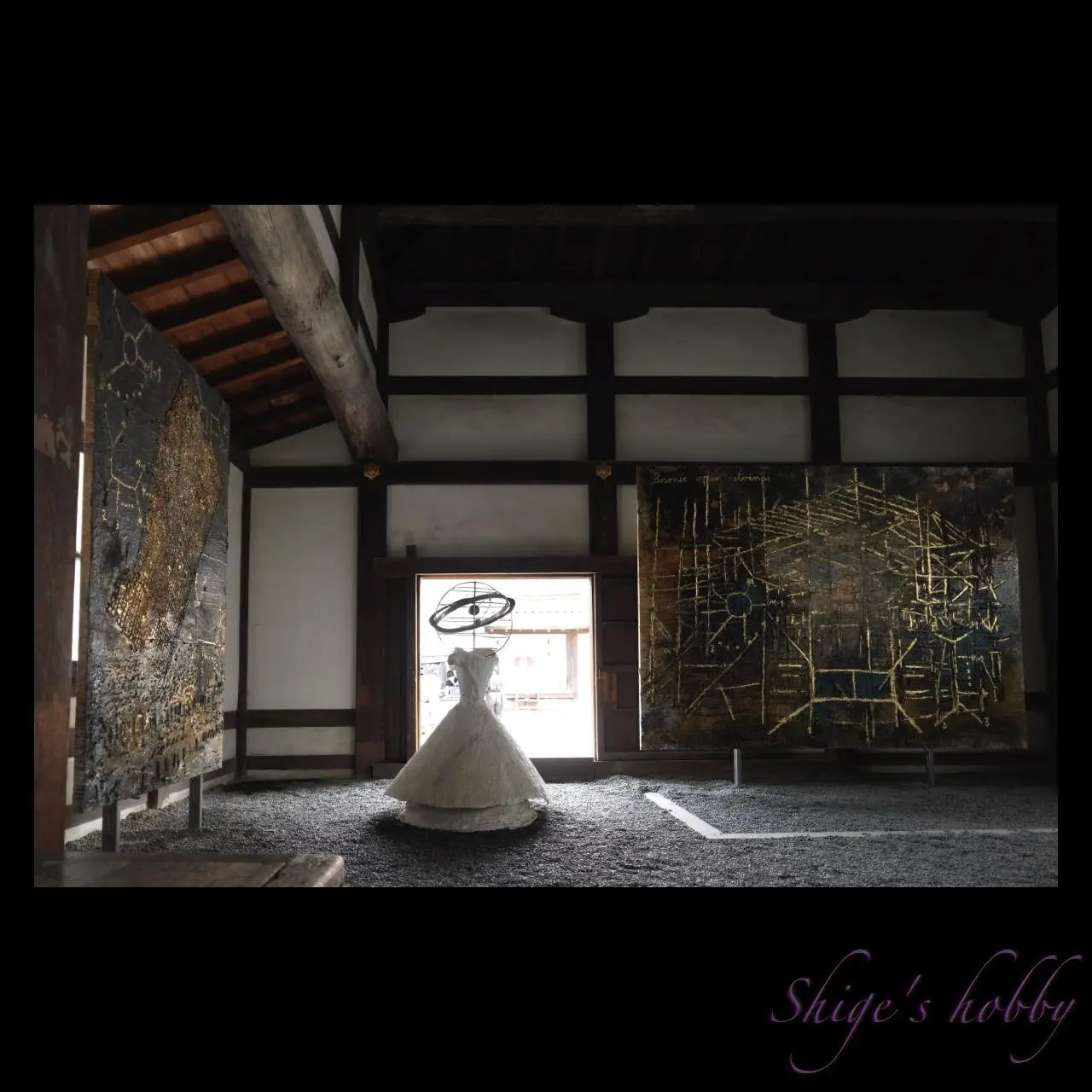
III. Vanishing with an empty name
After storing your shoes in the shoe cupboard and entering the kitchen, you come into view the large work “For Octavio Paz.” This sinister painting “depicts the scorched earth after the atomic bombing” (quoted from the distributed PDF), and the screaming mouth in the center is very striking.
The work is shaded by the buildup of paint, and since we viewed it in the morning when there was plenty of light, the image had strong contrast. The impression of the work would probably be different if we viewed it on a rainy day or when the sun was setting.
This room contains many other works besides those introduced above, and this is the center of the exhibition space, from which the works disperse into different spaces.
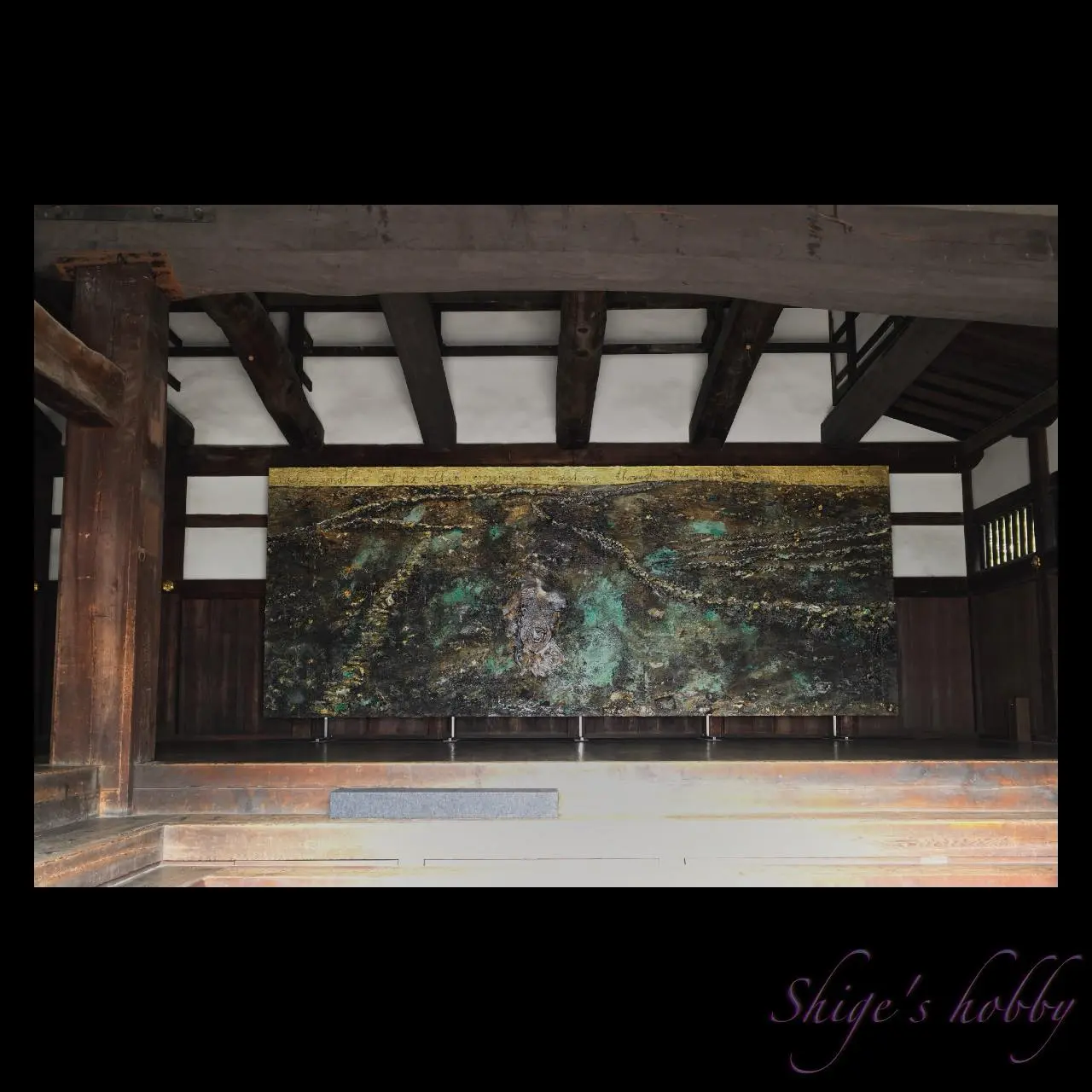
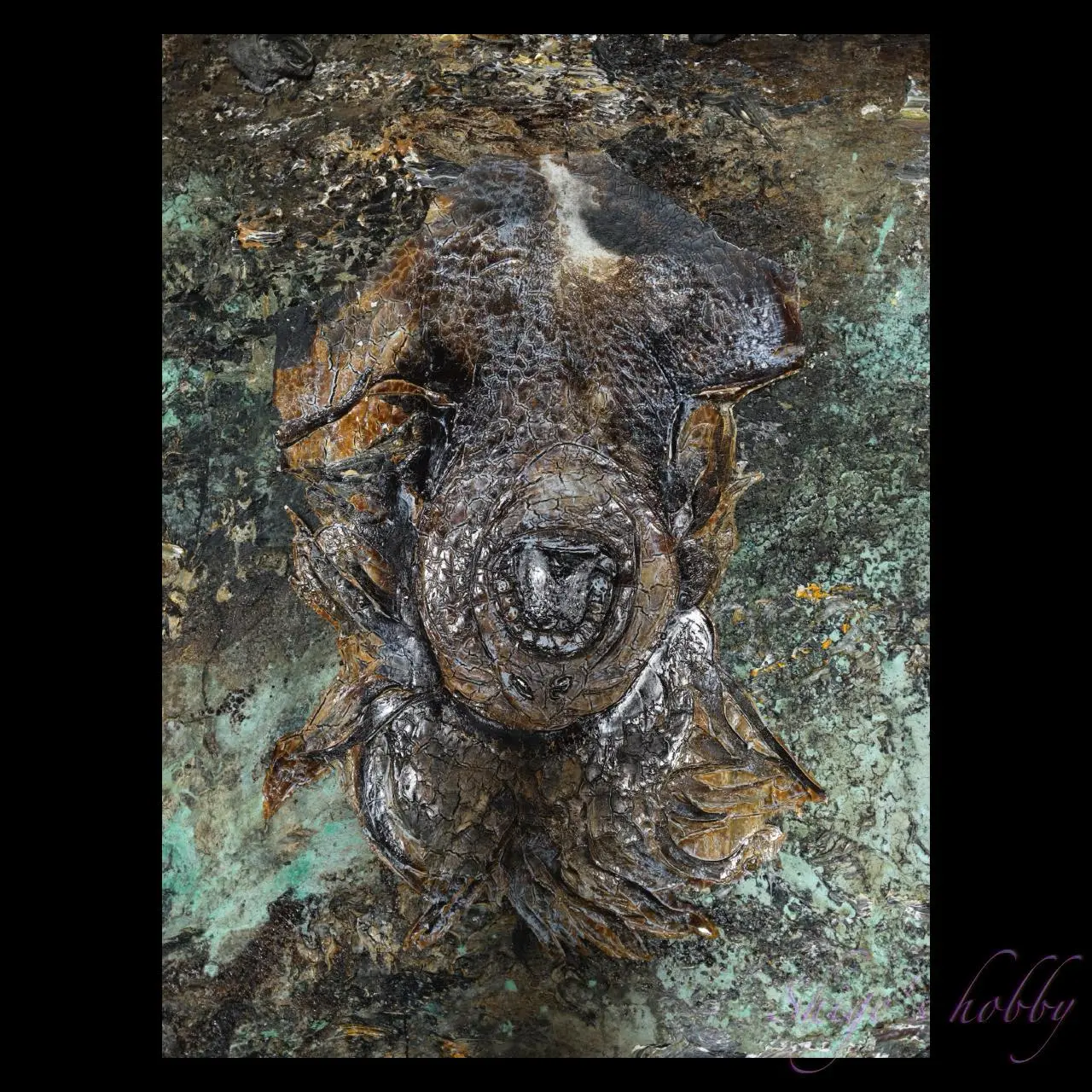
IV. Edo and the Age of Time
In the photo below, Anselm fuit hic shows the artist’s back in a way that is reminiscent of Kitawaki Noboru’s Quo Vadis (1949), housed at the National Museum of Modern Art. His appearance, which seems to be pondering where he is going next, reminded me of Kitawaki’s work.
Some of the paintings in this exhibition are so large that they would not fit through the doors of the rooms as they were, and when I asked a staff member how they were brought in, he told me that they were brought in in pieces and reassembled here. If you look at the back of some of the paintings, you can see the dividing lines.
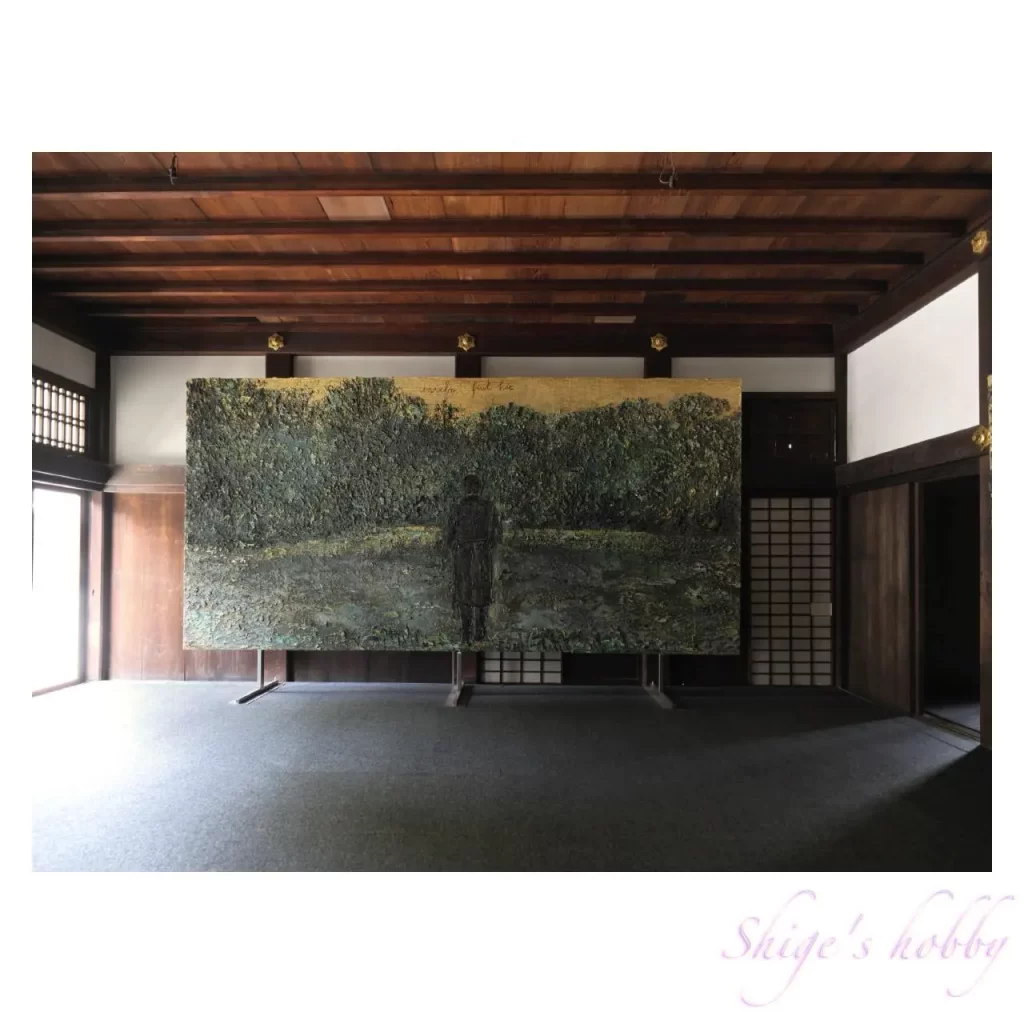
V. Arthur Rimbaud and Henry Morgenthau’s Wilderness
The final room is titled “The Wilderness of Poets and Bureaucrats.”
The central three-dimensional work is “Morgenthau Plan,” and features decayed books, snakes, and broken pottery among ears of rice, symbolizing the past, as the name “Wilderness” suggests.
Surrounding it are three other works depicting ears of rice: “Joseph’s Dream,” “Demeter,” and “Le Dormeur du val.” The other piece, “Le Dormeur du val,” which will be exhibited in Chapter V, is displayed in a room a little ways away. The detached work should have been placed around the three-dimensional work, but it appears to have ended up this way due to the exhibition space. If there is any significance to their separation, I would love to know.
Looking outside, there are six female statues – Daria, Myrtis, Solaris, Sappho, Schechina, and Margarethe von Antiochia – who seem to wander through time in the Nijo Castle gardens.
Each of the women is a poet or a saint, and the poet Sappho is familiar to me as she was painted repeatedly by Gustave Moreau and I have seen several of her statues at Moreau exhibitions.
This area of female statues can only be seen through the window, so it is frustrating that I cannot view each statue individually.
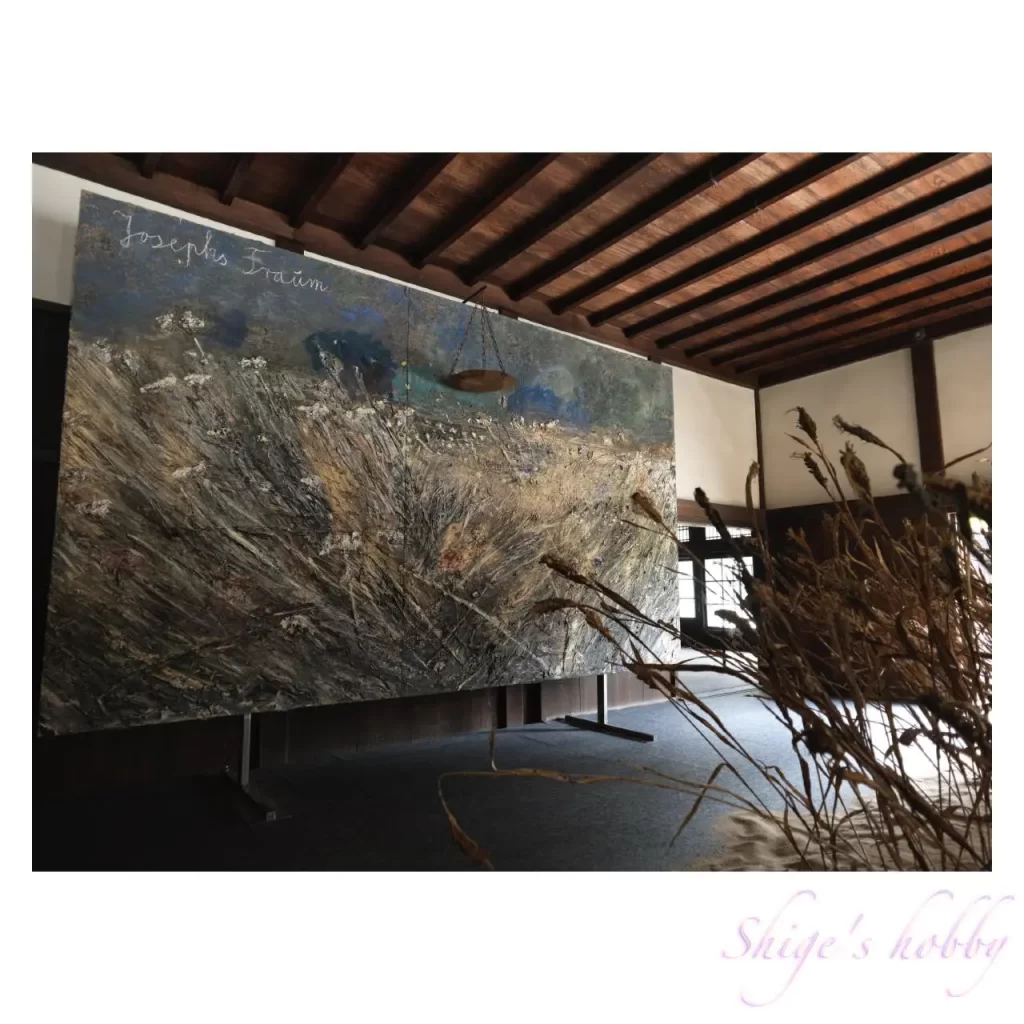
Summary
The exhibition felt that the location had a great influence on the artworks, and I spent two hours wandering around the exhibition area.
The distributed PDF didn’t contain much information, so viewers were free to use their imagination while viewing the exhibits, and the more I looked, the more intriguing things became. If I didn’t have to think about food, I would have liked to stay here forever.
Some of the works had an oily smell when you got close, which is probably from when the works were put together, and the contrast with the natural scent of the space was interesting. You could really feel that the works had matured in this location for this exhibition.
If it were a place I could easily get to, I would like to visit several times with different weather and times.
It has been 32 years since a large-scale solo exhibition of Kiefer will be held in Japan. The previous solo exhibition of Kiefer was “Anselm Kiefer: Melancholia – Wings of Knowledge” in 1993, which toured the Sezon Museum of Art in Ikebukuro (closed in 1999), the National Museum of Modern Art, Kyoto, and the Hiroshima City Museum of Contemporary Art in Hiroshima.
The previous solo exhibition was “Anselm Kiefer” at the Fuji Television Gallery in 1992, and an exhibition centered on Kiefer was “Anselm Kiefer and Art of the 1980s” at the Kawamura Memorial DIC Museum of Art from May 30th (Sat) to July 26th (Sun) 1998. There are three pieces in Takashi Murakami’s personal collection, which were exhibited at the Yokohama Museum of Art’s “Murakami Takashi’s Superflat Collection” in 2016.
In addition, the following works by Kiefer are held in Japan: Museum of Contemporary Art Tokyo’s Icarus – Sands of the Periphery (290 x 360 cm, 1981), Toyota Municipal Museum of Art’s Fly! Bombardment (330 x 560 cm, 1990), Heavy Water (70 x 50 x 50 cm, 1987), Sezon Museum of Modern Art’s Women of the Revolution (1992), Empress Elisabeth of Austria (1990), and one other piece; Setagaya Art Museum’s Waves from East to West (100.0 x 240.0 cm, 1987 (acrylic, photo collage, lead, board), Mie Prefectural Art Museum’s For Khlebnikov (1984-86), and Shizuoka Prefectural Art Museum’s Aurora (241.4 x 101.4 cm, 1978-88). None of these works are permanently on display in the museum’s collection, so you’ll need to check the permanent exhibition list at each museum and go to see them when they are on display.
Fergus McCaffrey, a gallery in Omotesando, is also hosting “Anselm Kiefer: Opus Magnum” from April 2 to July 13, 2024, and “Anselm Kiefer: Two Paintings” from April 25 to July 12, 2025.
Gallery
Reference links
- Kiefer Exhibition SOLARIS・Official page
- Nijo-castle・Official page
- Hiroshima City Museum of Contemporary Art, 1993 Kiefer Exhibition
- The National Museum of Modern Art, Kyoto, 1993 Kiefer Exhibition
- Kawamura Memorial DIC Museum of Art “Anselm Kiefer and the Art of the 1980s”
- Fergus McCaffrey・Official page
- Anselm Kiefer: Opus Magnum・Official page
- Anselm Kiefer: Two Paintings・Official page
- Kiefer’s work at Shizuoka Prefectural Museum of Art (no illustrations)
- Museum of Contemporary Art Tokyo, Kiefer works
- Toyota Municipal Museum of Art: Kiefer works
- Setagaya Art Museum: Kiefer’s works (no illustrations)
- Mie Prefectural Art Museum, Kiefer’s works (no illustrations)
- I want to go far away – A small project from the collection・Noboru Kitawaki, Quo Vadis, 1949
Update history
- 2025.5.29
Photo equipment
Affiliate links
- Please see the disclaimer regarding advertising here.
- Italicized links in the text are advertisement links that take you to other sites.
- Kiefer・Ads by Amazon
- Keifer(JPN)・Ads by Amazon
- Nijo-castle・Ads by Amazon
- Keifer(JPN)・Ads by Rakuten
- Nijo-castle・Ads by Rakuten
- Asoview・Ads by Value commerce


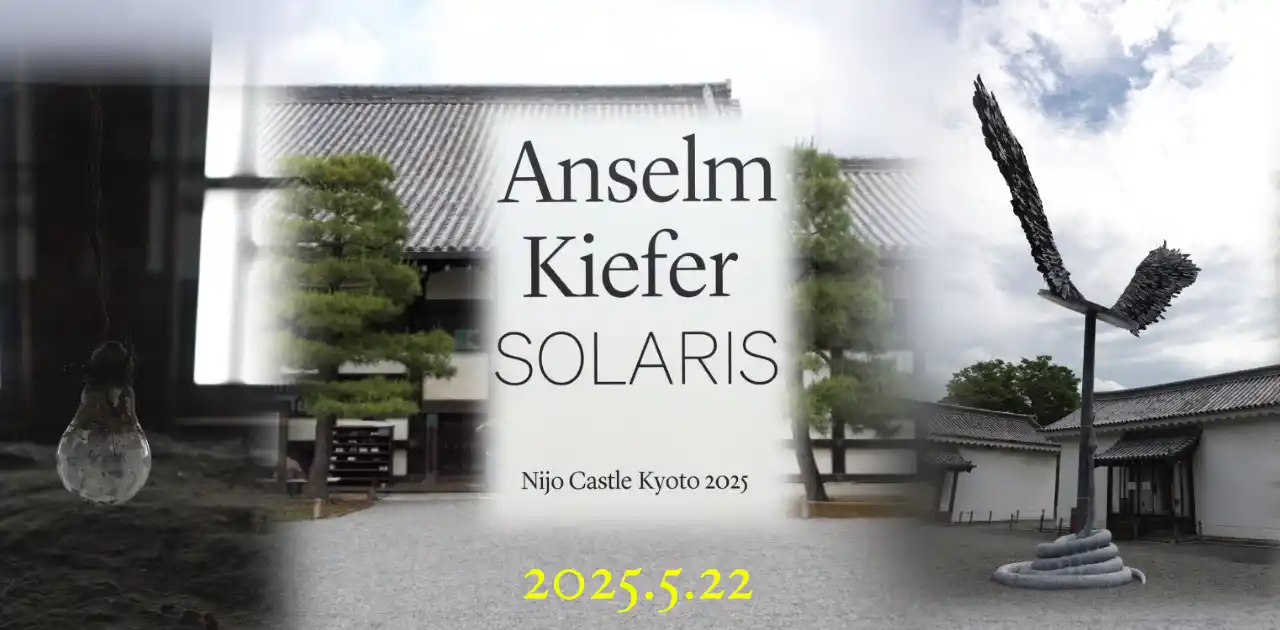
Be First to Comment